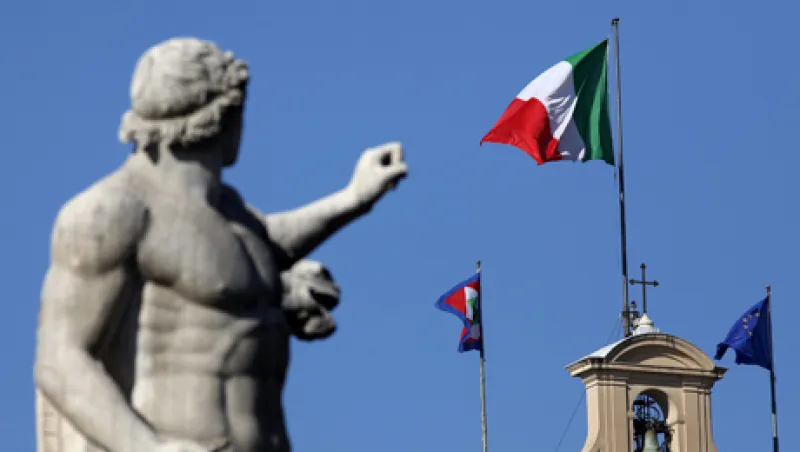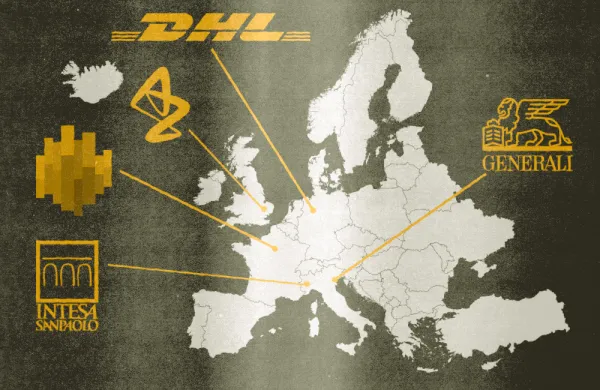The Italian economy declined rapidly in the second quarter, according to figures published on Tuesday that show the country is failing merely to stand still as it struggles against the headwind of government austerity.
Stella Wang, economist at Nomura in London, said, “Today’s release confirms our view that Italy will experience a relatively prolonged and deep recession.”
Tuesday’s numbers revealed that Italy’s latest recession has lasted for a full year — and there is little sign that the current quarter will see an end to it. However, what agitates economists and investors even more is the uncertain future of Italy’s economy and fiscal regime after Mario Monti’s technocratic administration comes to a close in April 2013.
The day’s preliminary data from Istat, the government’s statistics office, provided few details beyond the news of a 0.7 percent fall in gross domestic product that left the economy 2.5 percent smaller than a year before. However, separate figures published on Tuesday showed a sharp 1.7 percent quarter-on-quarter fall in industrial output — which is particularly sensitive to changes in sentiment.
One of the biggest drags on the Italian economy is the low employment rate, which puts a cap on tax revenue and saddles the finance ministry with a high social welfare bill. The rate was already low compared with other developed nations even before the recession because of slow underlying growth and strict employment rules that made businesses wary of taking on new workers. However, it has since fallen further, as the government lays off workers and as businesses respond to the gloomy economic outlook by trimming workforces, too. At 56.5 percent, the proportion of working-age adults in work is one of the lowest in the euro zone — and a hefty 15.6 percentage points below Germany’s.
Efforts by Monti to support employment by freeing up the labor market have proved less radical than he first envisaged. In particular, Confindustria, the Italian employers’ federation, has lambasted his attempt to encourage the hiring process by streamlining the firing process. A new rule makes it easier for business to make workers redundant for economic reasons, but following resistance from politicians and trade unions Monti was forced to insert a clause allowing judges to order reinstatement if the economic reasons given should prove “manifestly baseless.” The president of Confindustria, Giorgio Squinzi, has called the labor market changes “real rubbish” for increasing the cost of labor. The federation is especially dismayed by the increase in the tax paid by employers for short-term workers — an initiative by Monti designed to encourage permanent contracts.
But despite the compromises necessary for a technocratic government with a shallow political base, many analysts have praised Monti for the progress he has made in ironing out uncompetitive anomalies in Italian labor and product markets, which has required grappling with powerful entrenched interests.
Monti’s most important achievement is, perhaps, his success in boosting tax revenue despite the short-term problem of a shrinking economy and the underlying long-term problem of a notoriously porous tax system. The tax take rose 4.3 percent year on year to €191 billion ($238 billion) in the first six months of 2012, according to Monday’s official estimate — swelled by a reintroduced property levy that netted €3.9 billion. Monti’s government has also introduced tough measures against tax evasion. He has enjoyed the advantage that in Italy, only the government is poor — personal wealth is high. The average household has $54,706 in financial assets according to the Organization for Economic Cooperation and Development (OECD), compared with an OECD average of only $36,238.
Many analysts’ greatest fear is not that Monti is failing to reform sufficiently rapidly, but that the reform process will come to an abrupt end in the spring when he is due to step down after a general election. The (highly provisional) front-runner to be Italy’s next premier, Pier Luigi Bersani, leader of the center-left Democratic Party, has eagerly expressed support for many of Monti’s measures in public. However, Monti’s watering-down of labor market changes can be attributed largely to opposition to parts of the program from Bersani and other members of his party.
Despite this, for institutional investors who want their money back on their Italian debt when it eventually matures, Bersani may be the least bad option, given that Monti has repeatedly said he will not seek to extend his term in office. Possible rivals for the premiership include Beppe Grillo, leader of the new Five Star Movement, a protest group, which has at times scored second in the polls not far behind the Democratic Party. Grillo has in the past said that “public debt should not be repaid or should be repaid only partially,” though some recent comments have been less extreme.
Responding to Italy’s mix of economic and political problems, BlackRock, the world’s largest asset manager, has rated Italy 44th out of 48 countries in its latest Sovereign Risk Index — giving it a worse rating even than Spain, which is ranked 40th. The index measures credit risk, basing its assessment on financial data, economic surveys and politics.
Italy’s 10-year yield dropped 12 basis points to close at 5.89 percent on Tuesday on growing hopes of a euro zone rescue of the country’s debt market. However, many institutional investors remain reluctant to pay a real interest rate (after subtracting inflation) of under 4 percent, given the possibility that Italy may in the future either be unable or unwilling to service its debt.






